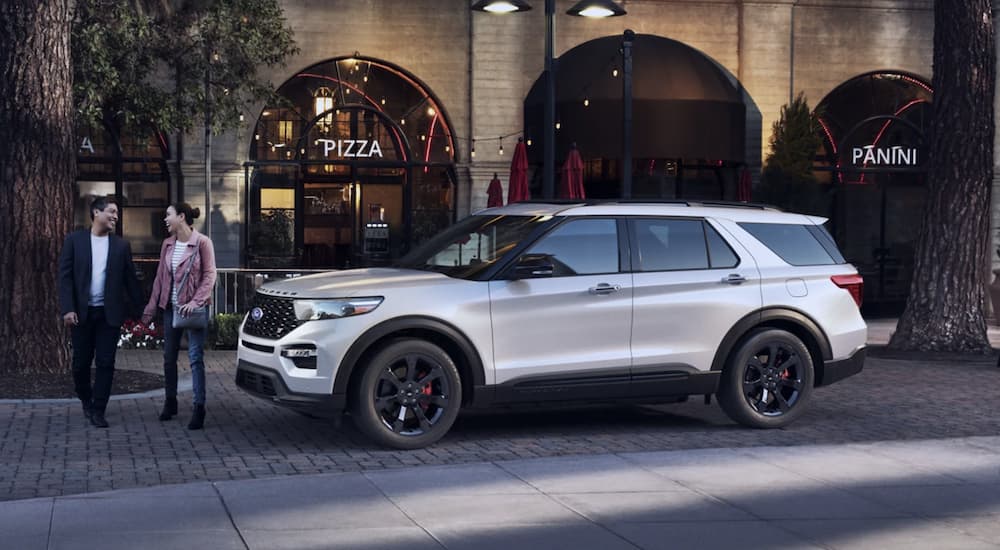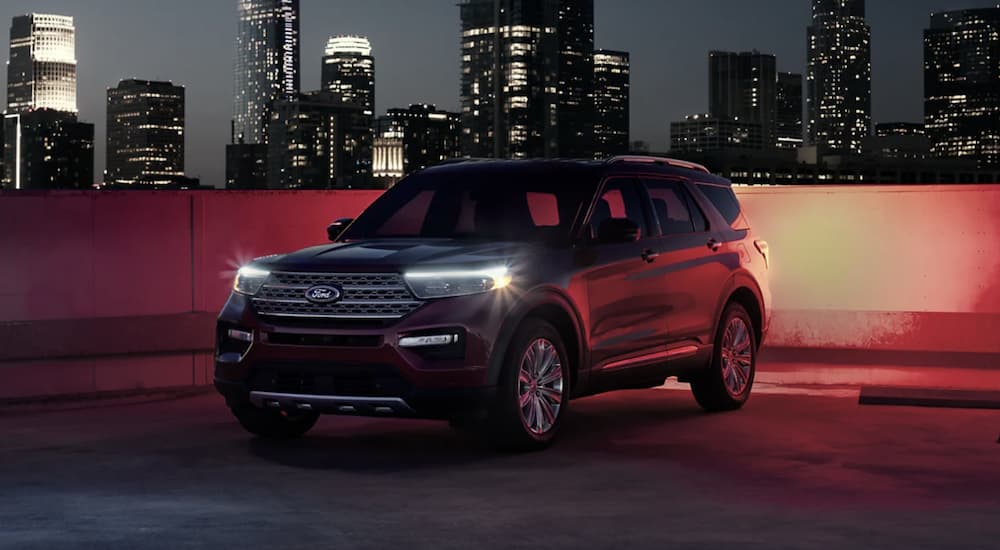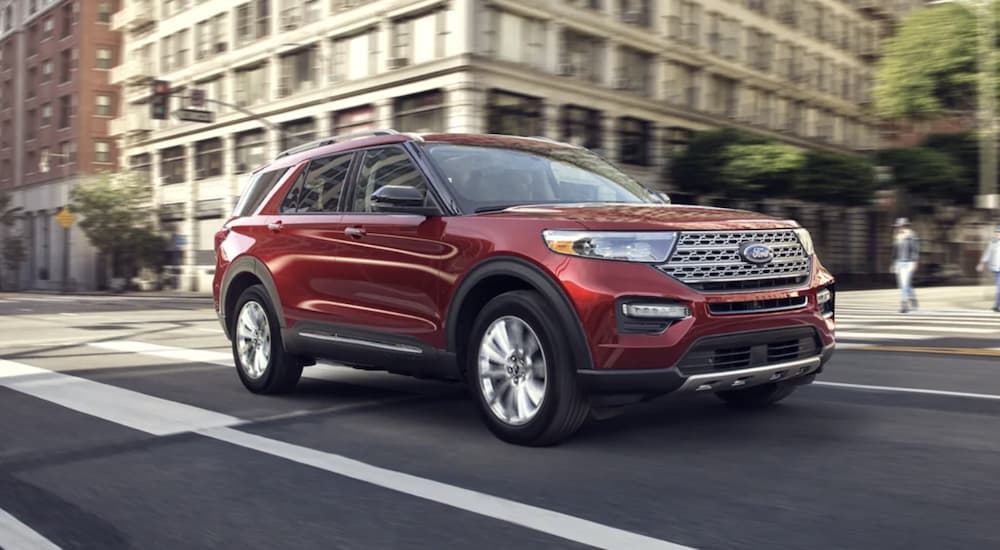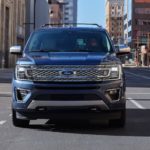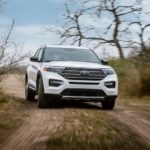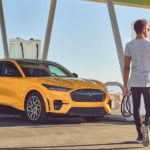Ford has been slowly transforming some of its most popular vehicles running on combustion-based engines into all-electric vehicles, powered by electric motors and large battery packs that drivers plug into a socket to refuel. Ford’s current lineup of all-electric vehicles is rather small but promising. The Mustang Mach-E was a bit of a surprise, turning the popular performance pony car into an electric sports utility vehicle, and the Ford F-150 Lightning had lots of people racing to their nearest Ford dealership to pre-order the all-electric, full-size pickup truck. But beyond that, what else has Ford put onto the market? Well, there’s the all-electric E-Transit, an electric iteration of the popular commercial transport and passenger vehicle. But let’s be honest, the variety and versatility of the electric offerings are limited.
Well, there’s a reason that the Blue Oval brand is taking small steps into the market and biding their time to ensure that they have surefire winners rather than unappealing stinkers. A large part of it is appealing to the broader market. This means ensuring that what they offer is worth buying, which is an important factor for them as they move toward ensuring a sizable portion of their annual offerings is all-electric by 2030. In many ways, it should come as no surprise that the next two big all-electric candidates on Ford’s plate are two of their most popular SUV brands: the Ford Explorer and Lincoln Aviator.
Slowly but Surely Paving the Way
Before getting to the popular much larger SUVs in their stash, Ford did well to test the waters with the Mach-E and E-Transit. The Mach-E made its debut as a 2021 model year in late 2020, while the E-Transit was released in 2021 as a 2022 model year. Both vehicles targeted two completely different market segments but were laying the groundwork for a lot of new technology Ford was experimenting with and hoping to make available to the wider public across their model year lineup.
With the introduction of the F-150 Lightning set to roll out onto the market, Ford is tactically targeting a completely different segment than the Mach-E and E-Transit. They’re looking to tap into every potentially interested driver looking to find the right kind of electric vehicle for their driving needs. With the F-150 Lightning, the company is now aiming to lure in truck enthusiasts, work-site drivers, haulers, and utility workers. They’re combining many of these forays into electric automobile engineering with other new tech.
For instance, many of Ford’s electric endeavors were also tied to autonomous driving mechanisms to compete with Tesla. This included the introduction of the BlueCruise semi-autonomous driving system. It wasn’t just about changing the powertrain but also how the vehicle provided a service for the driver and passengers alike. It’s these differentiating factors that help add the appeal to going all-electric. But is it enough?
Worries Over an Electric Explorer
The Lincoln Aviator and Ford Explorer are well-known marques in the auto industry. Many shoppers look to Lincoln for high-quality, luxury-oriented driving experiences. Many look to the Explorer for comfort, style, and the latest in SUV amenities and performance. But how does that translate into the world of electric propulsion? Well, it’s certainly not going to be the same kind of experience that many might have in mind. According to Ford CEO Jim Farley, it’s not just about swapping one powertrain for the next but bringing new technologies and experiences to drivers by turning popular combustion-powered nameplates into electric-powered vehicles.
Ford Authority reported that Farley stated at the Bernstein Strategic Decisions Conference, “On the EV business, you got to make sure that you don’t just have electric digital versions of your ICE products. To have top-end engineering much less, like Tesla has shown us, you have to approach the creation of the product through a conquest methodology. You design the product, so they are actually incredibly painfully advanced. You over-invest in electric architecture and embedded system, the way they look, the digital experience inside of them. It’s probably not going to be comfortable for our current customers who buy an Explorer.”
What exactly does Farley mean by this? Well, it’s the same sort of situation with the Mustang Mach-E. Traditional performance enthusiasts looking for a muscle car probably weren’t all that comfortable with an all-electric SUV variant of the popular Mustang. It’s unique. It’s different. But at the same time, it’s not trying to cannibalize what’s popular on the market right now, and this is what Farley is trying to get across: they can’t just engine-swap a popular model and call it a day; they need to bring something new to the table to challenge expectations, and that’s exactly what they’ve done with the Mach-E and F-150 Lightning.
What Can We Expect From an All-Electric Explorer and Aviator?
That’s the million-dollar question right now. What can we expect from the upcoming all-electric Ford Explorer and Lincoln Aviator? What changes are they making that might make fans of the current iteration of both vehicles less “comfortable” with what’s being churned out? How many stylistic changes and liberties will be taken with these vehicles? And will these changes compel onlookers to hit up their Ford dealership to place their reserves like they did with the F-150 Lightning once they become available?
There are a lot of questions and not a lot of answers right now, mainly because of how far out these vehicles are from being released. Ford has made some painstaking progress in overhauling its business to the tune of investing $850 million in order to produce all these new electric vehicles. The investment included the development of the BEV architecture with active aero technology for cooling and aerodynamic performance, technology that both the Ford Explorer and Lincoln Aviator will benefit from.
However, these electric SUV variants (or EUVs, as some call them) won’t be seeing the light of day until late 2024. This means that by the time the all-electric Explorer makes its way to the market, it will be two years from now, and we could be in a radically different environment as far as the consumer mindset is concerned when it comes to electric vehicles. That doesn’t necessarily mean that people will be more or less accepting of them, but it could change how willing they are to try an electric vehicle versus a combustion-based alternative, depending on a variety of factors. But more than likely, entry-level costs and fuel economy are going to be the two most important factors.
Are You Ready for an Electric Explorer and Aviator?
While the concept of going all-electric may seem mind-boggling to some people, things have rapidly changed over the last few years. With the budding popularity of Tesla, and the major front-runners in the auto industry adopting the electric tech for their own brands, we’ve seen a decided shift in the marketplace from ideological pursuits to actuation. We now have a sizable offering of electric vehicles thanks to nearly every major manufacturer offering one in some segment, tapping the marketplace for every imaginable driving demographic.
But does that translate into the wider public being ready for an all-electric Explorer or Aviator? Will the average person want to drive an all-electric Explorer? If you visited a Ford dealership and had the option between a combustion-based Explorer and an electric Explorer, which one would you go with? And would the price be a major deciding factor? How much of the price would be a deciding factor? How much would safety, plug-in availability, charge times, and maintenance also play a role in your interest in either vehicle type?
In many ways, there are a lot of unknowns stepping onto the plateau of embracing electric propulsion, but at the same time, there are also a lot of possibilities and opportunities ripe for the picking. Depending on what sort of changes and alterations are made to the Ford Explorer and Lincoln Navigator will drastically change how people will view them as buying options and what their market adoption rates will be like. We’re definitely entering into interesting times that are sure to make motoring enthusiasts quite excited for the future.
